When buying or selling an RV, it’s essential to have all the necessary documentation in place to ensure a smooth and legally binding transaction. One of the most important documents is the RV bill of sale form, which documents the transfer of ownership from the seller to the buyer.
This legal document protects both parties involved in the sale and provides proof of the transaction.
What is an RV Bill of Sale Form?
An RV bill of sale form is a document that outlines the details of the sale, including the buyer and seller’s information, the RV’s description, and the agreed-upon terms and conditions.
It serves as a legal contract between the buyer and seller, ensuring that both parties are protected and that the transaction is legitimate.
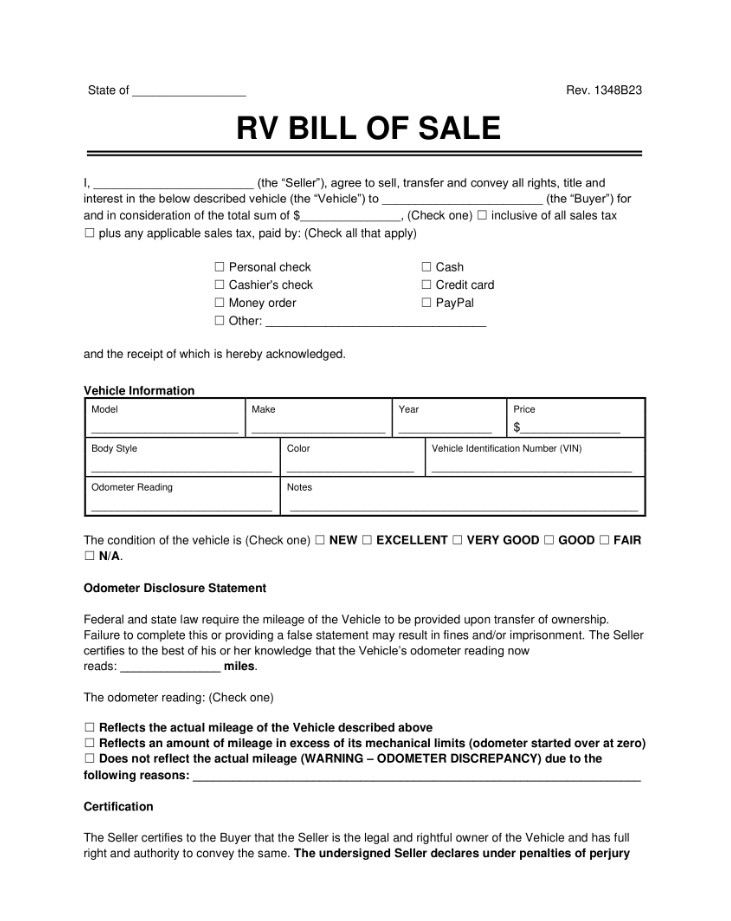
Why is an RV Bill of Sale Form Important?
The RV bill of sale form is crucial for several reasons:
- Proof of Ownership Transfer: The form provides evidence that the ownership of the RV has been transferred from the seller to the buyer. This is important for both parties, as it protects them from any future disputes or claims.
- Protection for the Buyer: With a bill of sale, the buyer can prove that they legally acquired the RV and have the right to possess it. This protects them from any potential issues, such as the previous owner claiming ownership or trying to sell the RV to someone else.
- Protection for the Seller: The bill of sale protects the seller by documenting the sale and releasing them from any liability or responsibility associated with the RV once it’s in the buyer’s possession. It provides a clear record of the transaction, preventing any future misunderstandings or legal issues.
- Legal Compliance: An RV bill of sale form ensures that the transaction complies with local laws and regulations. It ensures that both parties are aware of their rights and responsibilities and that the sale is conducted lawfully.
How to Fill Out an RV Bill of Sale Form
Now that you understand the importance of an RV bill of sale form, let’s discuss how to fill it out correctly:
- Gather the necessary information: Collect all the relevant details about the RV, including the make, model, year, and vehicle identification number (VIN). Also, gather the buyer and seller’s information, such as their names, addresses, and contact information.
- Download an RV bill of sale form: Look for a reputable source online where you can download an RV bill of sale form. Make sure the form is specific to your jurisdiction to ensure it complies with local laws.
- Fill in the details: Complete all the necessary sections of the form, including the buyer and seller’s information, the RV’s description, and the agreed-upon terms and conditions. Be as accurate and detailed as possible to avoid any confusion or disputes in the future.
- Review and sign: Once you’ve filled out the form, carefully review all the information to ensure its accuracy. Then, both the buyer and seller should sign the document to make it legally binding.
- Keep copies: Make copies of the completed and signed RV bill of sale form for both the buyer and seller. These copies serve as proof of the transaction and should be kept in a safe place for future reference.
Examples
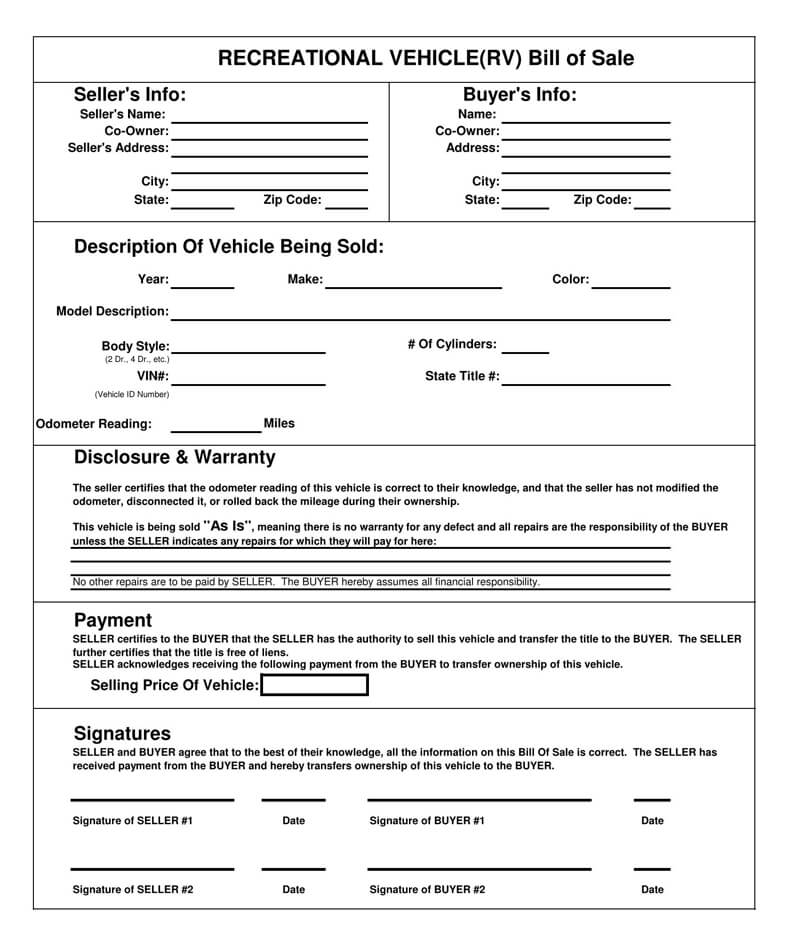
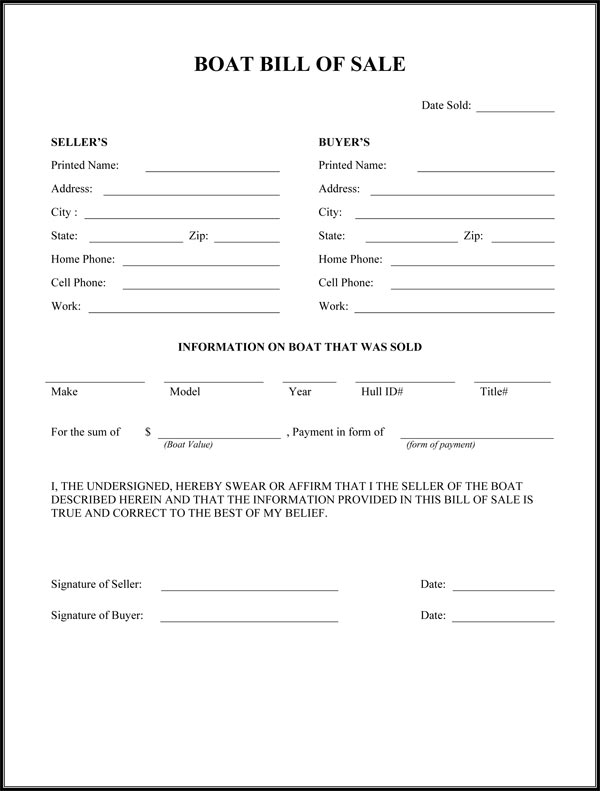
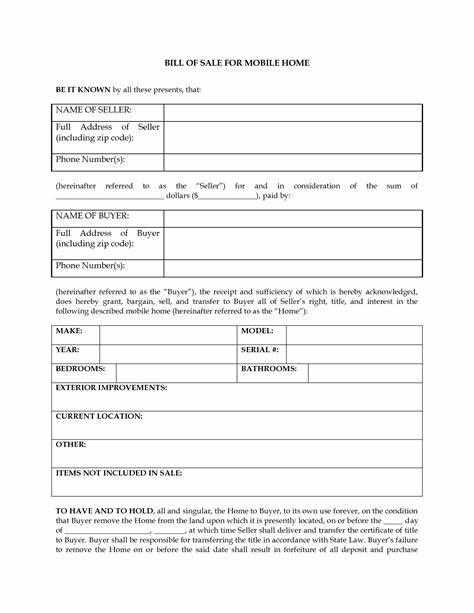
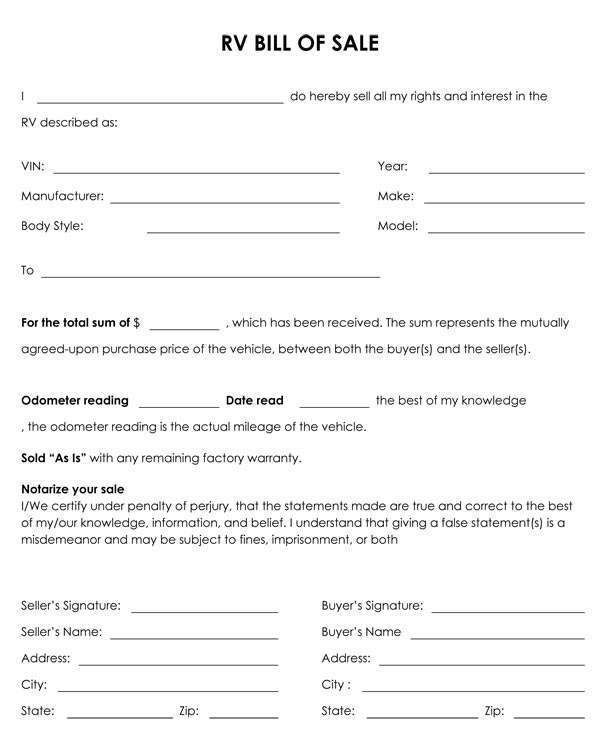
Tips for Successful RV Bill of Sale Transactions
Follow these tips to ensure successful RV bill of sale transactions:
- Research local laws: Familiarize yourself with the specific laws and regulations governing RV sales in your jurisdiction. This will ensure that your bill of sale form complies with all legal requirements.
- Be transparent: Provide accurate and detailed information about the RV, including any known defects or issues. Transparency builds trust between the buyer and seller and reduces the risk of disputes after the sale.
- Get a vehicle history report: If you’re the buyer, consider obtaining a vehicle history report to check for any previous accidents, title issues, or other potential problems. This will help you make an informed decision before purchasing the RV.
- Consider using a notary: While not always required, having the bill of sale form notarized adds an extra layer of authenticity and can provide additional legal protection for both parties.
- Keep copies of all documentation: In addition to the bill of sale form, keep copies of any other relevant documentation, such as maintenance records, warranties, and receipts. These documents can be valuable for future reference or if you decide to sell the RV later on.
By following these tips and using an RV bill of sale form, you can ensure a smooth and legally sound transaction when buying or selling an RV. Protect yourself and the other party involved by documenting the transfer of ownership and understanding your rights and responsibilities.
RV Bill of Sale Form – Download